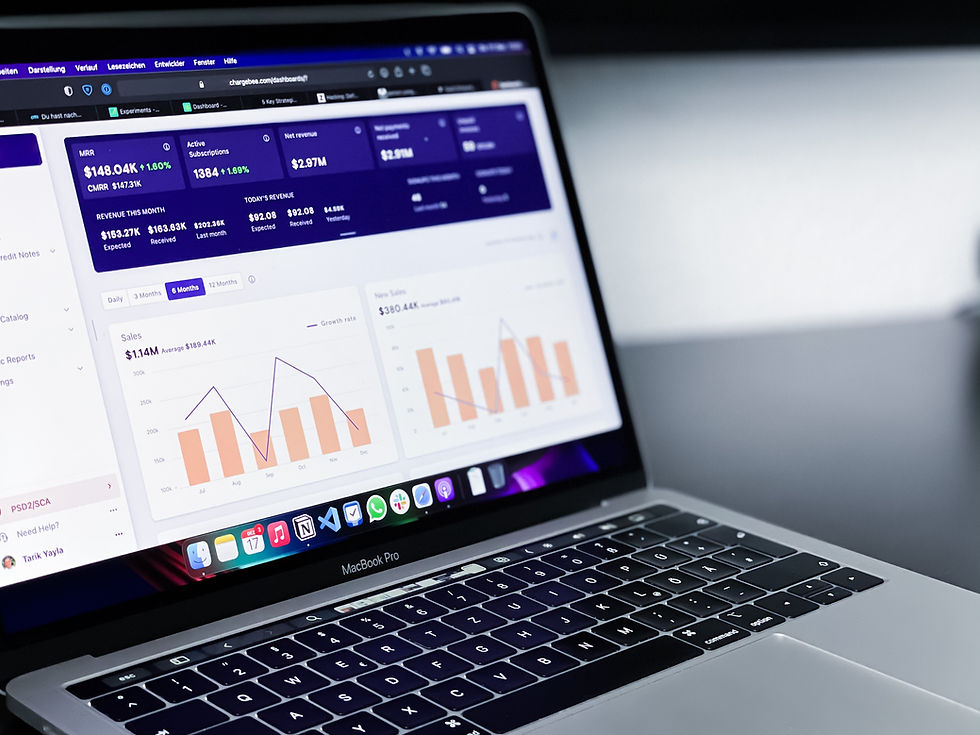Beyond Likes: Measuring the True Impact of Your Social Media Efforts and Proving ROI
- Ailsa Kemp
- Mar 25, 2024
- 3 min read
Updated: Apr 17, 2024
In the realm of social media marketing, where budgets are scrutinised and results reign supreme, the true heroes are those who can demonstrate the real impact of their efforts and prove a tangible return on investment (ROI). When you’re running your own social accounts, it’s important you understand how your efforts are paying off.
This guide equips you with the tools and insights to move beyond superficial clicks and delve into the deeper waters of meaningful metrics, showcasing the undeniable value your social media magic brings to your brand or clients.

Now don’t get me wrong, likes are actually important. They indicate how your content is landing with your target audience but it’s only part of the picture.
Step 1: Redefining Your Metrics Compass:
Align with Business Goals: Likes and shares are fun, but are they aligning with your overall business objectives? Define your social media goals, whether it's brand awareness, website traffic, lead generation, or customer engagement. Choose metrics that directly tie back to those goals, like website clicks, lead conversions, or customer sentiment analysis.
Quality Over Quantity: Don't get seduced by inflated follower counts. Focus on building a qualified audience, engaged individuals who resonate with your brand and hold potential value. Track metrics like organic reach, post engagement rates, and brand mentions to gauge the true depth of your impact.
Go Beyond the Surface: Dig deeper than the immediate results. Analyse website traffic sources, track conversion paths from social media clicks to purchases, and measure customer lifetime value (CLV) acquired through social media channels. This paints a holistic picture of your reach, influence, and long-term impact.
Step 2: Tools of the Trade for Smart Measurement:
Analytics Powerhouses: Utilise platforms like Google Analytics or social media platforms' native analytics dashboards to track website traffic, engagement metrics, and audience demographics.These are your data mines, revealing valuable insights into your target audience and campaign performance.
Conversion Tracking Magic: Tools like Google Tag Manager or social media advertising platforms' conversion tracking features help you connect the dots between social media clicks and actual leads, purchases, or other desired actions. This proves the direct impact of your social efforts on tangible business outcomes.
Social Listening Platforms: Tools like Brand24 or Sprout Social's "Social Listening" feature monitor online conversations about your brand, competitors, and industry trends. Analyse customer sentiment, identify brand advocates, and gauge the overall perception of your brand online.
Step 3: Storytelling with Data, Not Just Spreadsheets:
Visualise Your Success: Don't drown your client (or yourself) in data. Transform raw metrics into compelling visuals like charts, graphs, or infographics. Make the data tell a clear story, highlighting trends, showcasing improvements, and quantifying the impact of your social media efforts.
Focus on the "So What?" Factor: Don't just present data, translate it into actionable insights. Explain what the metrics mean, how they connect to business goals, and what adjustments you'll make based on the data. Show how your social media strategy is driving real results, not just generating numbers. If you’re doing your own socials, it helps to put it into graphs for yourself, especially if you’re a visual learner.
Regular Reporting is Key: Don't leave your clients in the dark! Establish a regular reporting schedule, presenting your key metrics, their impact on business goals, and planned future actions. Consistent communication demonstrates the ongoing value of your social media efforts and keeps everyone aligned. When doing it for yourself, I recommend checking your stats every 2-3 months and see how the results are matching up with your strategy.
Remember: Proving ROI in social media is not about boasting about likes; it's about demonstrating the measurable impact of your strategy on your business objectives.












